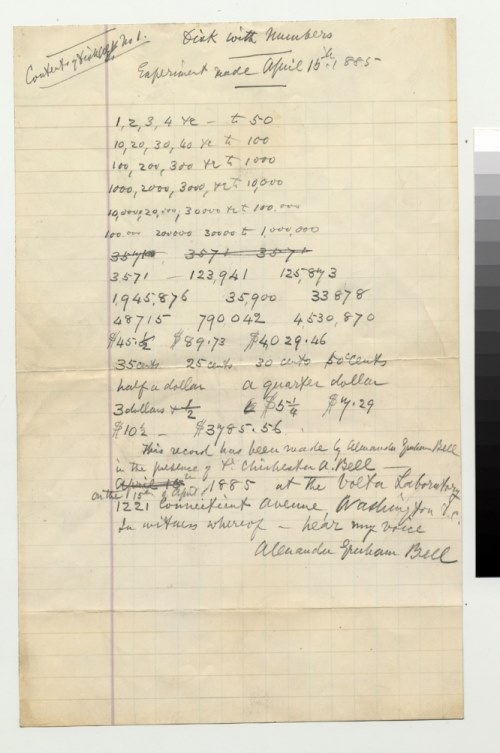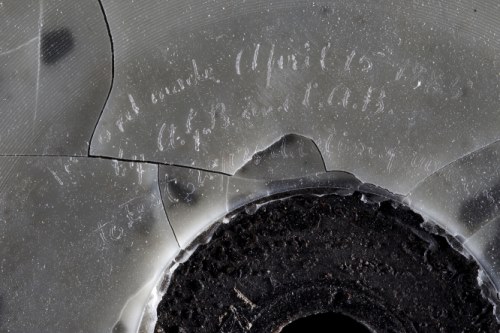For over 130 years, people have been able to hear each
otherís voices thanks to Alexander Graham Bell and his
monumental invention of the telephone (as well as other
sound-recording devices). Do you ever wonder what the
inventor himself sounded like? Now, you can finally listen
to the voice of Alexander Graham Bell.

Alexander Graham Bell (1847-1922).
(Image credit: Smithsonian Institution Archives)
In 2011, The Lawrence Berkeley National Laboratory
and the Library of Congress teamed up to
decode recordings made in Bellís Washington, D.C. Volta
Laboratory between 1881 and 1885. Six discs, believed to
possess the voice of Bell were submitted to the sound
recovery process in order to preserve and catalog the
Smithsonian Museumís early recordings collection.
What can we hear?
Among the original 200 audio recordings the Smithsonian
had, researchers found a piece of paper believed to be a
transcript of a recording. The transcript was signed and
dated by Bell and concluded with the words ďďin witness
whereof, hear my voice, Alexander Graham Bell.Ē

Handwritten transcript of audio
recording containing Alexander Graham Bell's voice. (Photo
credit: Smithsonian)
When the team set out to decode the discs, they came
across one that had the same date found on that transcript,
April 18, 1885, and the initials ďAGB.Ē Once sound was
recovered through the optical sound recovery process,
researchers were able to match the contents of the disc to
the transcript and positively identify Bellís voice.
Listen to Bell read from the transcript below.
They were also able to identify the voice of Bellís father,
Alexander Melville Bell, on a recording from September 1881
recovered from a wax-coated drum.
Click here to listen to another Volta disc recording that was originally recorded on December 29, 1881 and reproduced around 1885 in tinfoil over plaster on a cardboard backing.
The optical sound recovery process
In order to actually decode these recordings, the team
employed a non-invasive optical technique created by the
Berkeley Lab. This technique creates a high-resolution
digital map of the wax-on-binder-board-disc which is then
processed to remove any damage such as scratches. The team
then used software to calculate the motion of a stylus
moving through the discís grooves to reproduce the audio
content and create a digital sound file.

Bell's phonorecord dated April 15,
1885 with the initials "AGB" was decoded. (Image credit:
Richard Strauss, Smithsonian)
Big step
Recovering the sound from the Volta discs has provided
knowledge of the invention process of 19th century labs.
Not only do these findings allow the public to hear the
voice of the famous inventor, but they also provide further
insight into the late 1800ís. Researchers now have further
knowledge of the speech patterns of the time period and can
hear exactly how people sounded.
Story via Smithsonian.
http://www.electronicproducts.com/Optoelectronics/Image_Sensors_and_Optical_Detectors/Researchers_revive_the_lost_voice_of_Alexander_Graham_Bell_from_1885.aspx